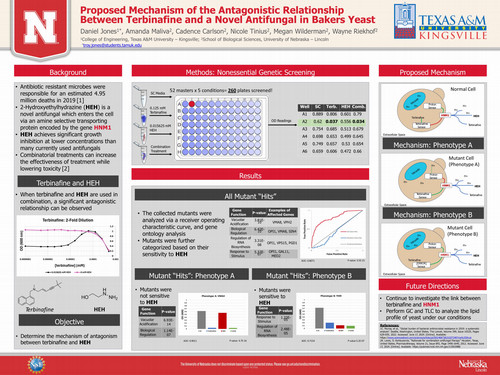Overuse of antibiotic compounds is quickly leading to increased microbial resistance, resistance which was responsible for an estimated 4.95 million deaths in 2019. Increased microbial resistance is of great concern, but it is combatable with the use of novel antifungal compounds such as 2-hydroxyethylhydrazine (HEH) or combination antifungals. However, past research has revealed antagonistic effects between HEH and the commonly prescribed antifungal terbinafine which may make their use in combinatorial treatments unviable. This study makes use of a functional genomic screen to identify multiple genes and cellular functions which may be responsible for the antagonistic effect observed between the two antifungals. Notably, pathways controlling the expression and function of the gene HNM1, responsible for transporting nitrogenous bases such as choline, were implicated in the screen. The implication of HNM1 reveals a previously unseen relationship between terbinafine and the transport of nitrogenous bases across the cell membrane.
Faculty Mentor: Dr. Wayne Riekhof
School of Biological Sciences
University of Nebraska-Lincoln


